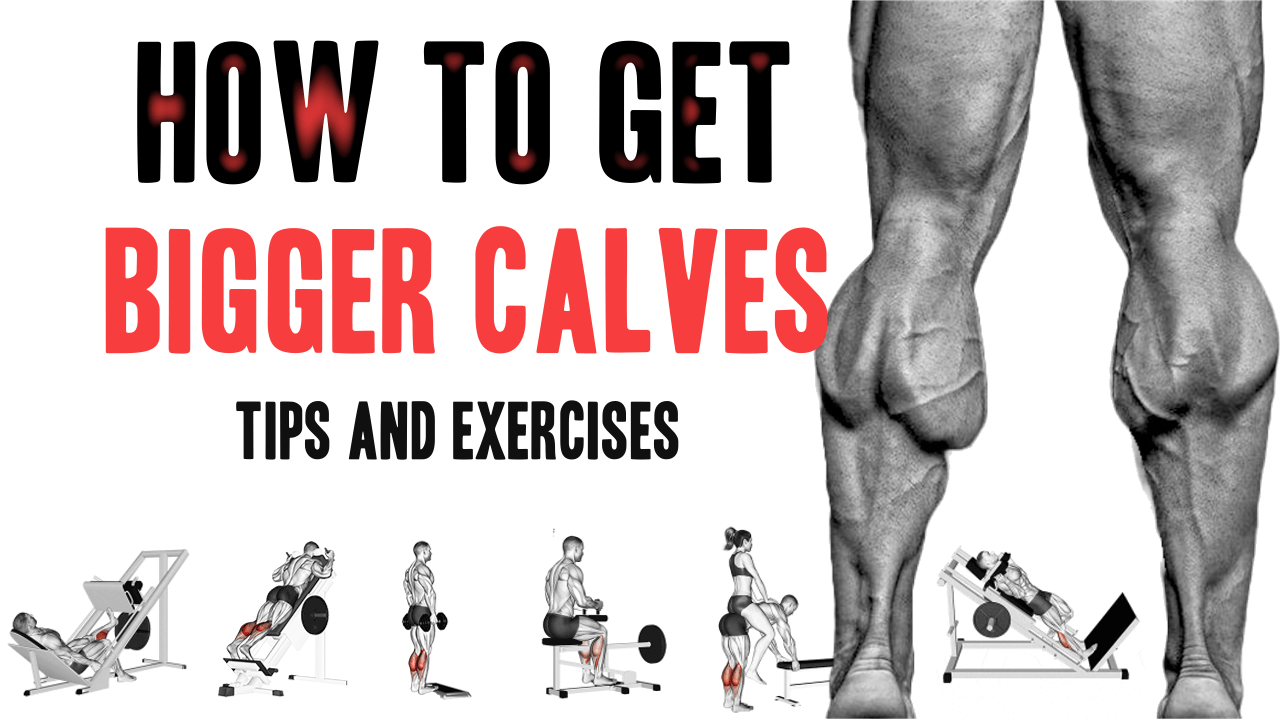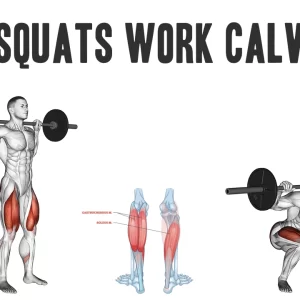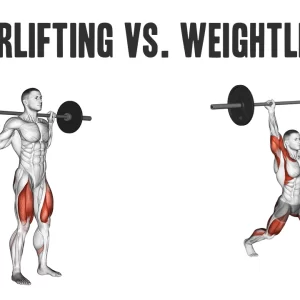Contents
Why can’t you seem to build bigger calves, even though you’ve tried again and again?
Bigger calves are a dream for many people.. Strong, well-defined calf muscles not only enhance your overall physique but also contribute to improved performance in various physical activities. While some individuals are naturally blessed with genetically gifted calves, others may find it challenging to develop this muscle group effectively.
The Ultimate Guide to Building Calves: Tips and Exercises
Building muscular calves is a very difficult task for many people. Many times, the people looking to build their calves are the ones who weren’t blessed with great legs. Several factors may contribute to the difficulty in achieving substantial calf growth:
1- Genetics:
2- Overlooked Training:
3- Lack of Progressive Overload:
4- Insufficient Training Frequency:
5- Inadequate Nutrition and Recovery:
6- Limited Range of Motion:
Understanding these potential reasons why you haven’t been able to build bigger calves is the first step towards overcoming the challenges. By addressing these factors and incorporating targeted calf exercises, progressive overload, and a well-balanced approach to nutrition and recovery, you can maximize your calf development potential and achieve the impressive calves you desire.
Calf Anatomy and Function
Before diving into exercises, it’s essential to understand the anatomy and function of the calf muscles. The calf muscles, comprised of the gastrocnemius and soleus, are naturally resistant to growth due to their constant engagement in everyday activities like walking and standing. Overcoming this natural resistance requires a focused and strategic training plan.
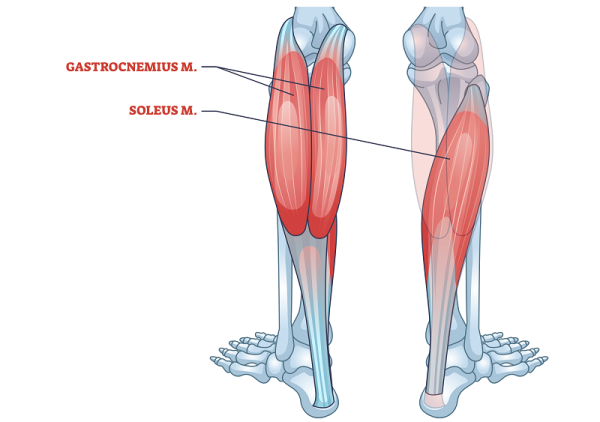
- Gastrocnemius:
- Location: The gastrocnemius is the larger, more superficial muscle of the calf. It originates from the two heads at the back of the femur (thighbone) just above the knee joint and then attaches to the Achilles tendon, which inserts into the heel bone (calcaneus).
- Muscle Fibers: The gastrocnemius consists of both fast-twitch and slow-twitch muscle fibers, making it suitable for explosive movements like jumping and powerful contractions during activities like sprinting.
- Function: The gastrocnemius plays a vital role in plantar flexion, which is the movement that points the foot downward. It is actively engaged during activities such as walking, running, jumping, and pushing off the ground.
- Soleus:
- Location: The soleus is a deeper muscle located underneath the gastrocnemius. It originates from the back of the tibia and fibula (lower leg bones) and also attaches to the Achilles tendon, joining the heel bone.
- Muscle Fibers: The soleus is predominantly composed of slow-twitch muscle fibers, making it well-suited for endurance-related activities.
- Function: The primary function of the soleus is to assist the gastrocnemius in plantar flexion, especially during activities that require prolonged standing or walking. It is highly engaged during activities like jogging and maintaining posture.
Together, the gastrocnemius and soleus muscles work synergistically to enable movements involving the feet and ankles. When these muscles contract, they create the action of pointing the toes downward, which is essential for propelling the body forward during various activities.
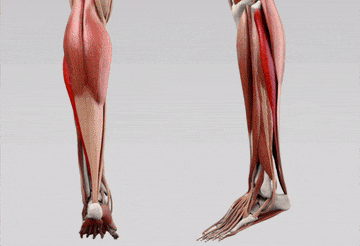
Additionally, the calf muscles play a significant role in stabilizing the ankle joint, especially during weight-bearing activities. This stabilization is essential for maintaining balance and preventing injuries during dynamic movements. Developing these muscles not only enhances your athletic performance but also adds a touch of aesthetic appeal to your legs.
Muscle Fiber Types:
Skeletal muscles, including the calf muscles, are composed of different types of muscle fibers, classified mainly as slow-twitch (Type I) and fast-twitch (Type II) fibers.
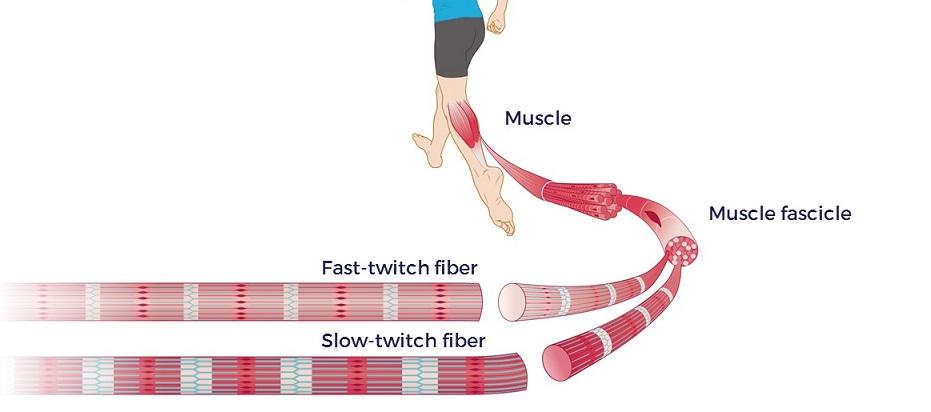
Slow-twitch fibers are more endurance-oriented and have a greater capacity for aerobic activities. They are highly engaged during activities that require sustained efforts, such as walking and maintaining posture. Slow-twitch fibers have a lower potential for hypertrophy.
Fast-twitch fibers, on the other hand, are more strength and power-oriented. They are actively involved in explosive movements like jumping and sprinting. Fast-twitch fibers have a higher potential for hypertrophy.
Calf muscles consist of both slow-twitch and fast-twitch fibers, with the gastrocnemius containing a higher proportion of fast-twitch fibers compared to the soleus (1).
How to Get Bigger Calves
Mechanisms of Hypertrophy:
Muscle hypertrophy occurs when muscle fibers experience micro-tears and damage during resistance training or exercise. Following the workout, the body initiates a repair process, during which muscle cells fuse and create new myofibrils (muscle protein strands) to repair and reinforce the damaged fibers. This adaptive response results in an increase in muscle size and strength over time.
Let’s explore the key aspects to consider when designing your calf training routine:
Training Volume:
Training volume refers to the total amount of work performed in a single workout or over a specific period. For calf exercises, focus on higher repetitions and sets to effectively challenge the muscles. Start with 2-3 sets of 8-12 repetitions per exercise and adjust the volume based on your fitness level and recovery ability. However, including two to three calf exercises in your training program is generally sufficient for most people.
Training Frequency:
Some of the biggest mistakes people make when trying to build their calves is not working them with enough intensity and only working them once per week.
Train your calves frequently and with adequate volume. Since calves are used to being under constant load (walking and standing), they tend to respond better to higher training frequencies. You can train your calves 2 times a week, allowing for enough rest between sessions.
Based on the current body of evidence, when comparing studies that investigated training muscle groups between 1 to 3 days per week on a volume-equated basis, the data indicates that training twice a week promotes superior hypertrophic outcomes compared to training once a week. Therefore, it can be inferred that major muscle groups should be trained at least twice a week to maximize muscle growth.
Role of Progressive Overload:
You might be thinking that it’s tough to increase the amount of weight you lift every single workout. And you would be right… If you want bigger calves, you have to force them to grow… And that can only be done by increasing the amount of weight you lift. You can try doing more reps with the same weight BUT nothing works better than heavier weight.
One of the fundamental principles of muscle hypertrophy is progressive overload. Progressive overload involves gradually increasing the stress placed on the muscles during training. As the muscles adapt to the increased workload, they continue to grow stronger and larger. In the context of calf training, progressive overload can be achieved by increasing the resistance (weight) used during calf exercises, increasing the number of repetitions and sets, or adjusting the exercise intensity.
If you weren’t blessed with great calves or even “okay” calves, you’re going to have to go through some pain to build your calves.
Proper Nutrition and Rest:
When it comes to building bigger and stronger calves, your workout routine is only one piece of the puzzle. Proper nutrition plays a vital role in supporting muscle growth and recovery, including those stubborn calf muscles.
Ensure you’re consuming enough protein and overall calories to support muscle growth. Also, prioritize rest and recovery, as this is when your muscles repair and grow. Listen to your body and avoid overtraining, as it can lead to injuries and hinder progress.
Other strategies: Time Under Tension (TUT):
Increase the time under tension during calf exercises to maximize muscle engagement. Slow down the lowering phase (eccentric) of calf raises, hold the peak contraction at the top, or incorporate pauses in-between repetitions to increase TUT.
There are 4 parts of each rep. Here’s how you handle each part of the rep:
- Positive Portion (Concentric):
- During the concentric phase, which is the lifting or contracting phase of the movement, focus on explosively lifting the weight.
- Start each rep from the very bottom position and try to lift the weight as rapidly and smoothly as possible, engaging the calf muscles fully.
- Peak Contraction (Top of Each Rep):
- At the top of each repetition, achieve the best possible peak contraction in your calf muscles.
- Once you reach the top position, hold the peak contraction for a count of 1 seconds. This extended hold aims to intensify the muscle engagement and maximize the time under tension.
- Negative Portion (Eccentric):
- During the eccentric phase, which is the lowering or lengthening phase of the movement, focus on slow and controlled lowering of the weight.
- Take a full 4 seconds to lower the weight to the starting position, emphasizing the stretch on the calf muscles during this phase.
- Full Stretch (Bottom of Each Rep):
- At the bottom of each repetition, aim to achieve an even better stretch in your calves.
By incorporating this timing and control technique into your calf-building exercises, you can create greater muscle tension, which is a key driver for muscle hypertrophy. The combination of explosive lifts, peak contractions, slow negatives, and prolonged stretches challenges the calf muscles in unique ways, promoting enhanced development.
Variation in Foot Positioning:
Change the angle of your feet during calf raises to target different parts of the calf muscles. Try pointing your toes inward (inverted) or outward (everted) to hit the inner and outer portions of the calves. Studies show that these variations work.
Let’s explore the different foot positions and their impact on calf muscle activation:
- Standard (Toes Pointed Forward)
- Performing calf raises with toes pointed forward primarily targets the overall calf muscles, including both the gastrocnemius and soleus.
- This foot position is considered the standard calf raise, as it engages the entire calf complex in a balanced manner.
- Toes Pointed Inward (Lateral Calf Raises):
- When you perform calf raises with toes pointed inward, you place more emphasis on the outer portion of the gastrocnemius muscle.
- Toes Pointed Outward (Medial Calf Raises):
- Performing calf raises with toes pointed outward targets the inner portion of the gastrocnemius muscle.
By incorporating all three foot positions into your calf training routine, you ensure a comprehensive and well-rounded approach to calf development. Performing calf raises with different foot positions helps avoid muscle imbalances and provides a more symmetrical calf muscle development.
Specific Calf Exercises:
Focus on exercises that target the calf muscles directly. These exercises involve lifting your heels off the ground using the balls of your feet and then lowering them back down. You can do calf raises with bodyweight or add resistance by using dumbbells, a barbell, or a calf raise machine.
Always warm up before starting your calf workouts, and include stretching exercises for the calf muscles after training to improve flexibility and reduce the risk of injuries. For more calf exercises, check out here.
Standing Calf Raises

- Stand with your feet shoulder-width apart near a wall or a sturdy object for balance.
- Push up onto the balls of your feet, lifting your heels off the ground as high as possible.
- Hold the contraction at the top for a moment, then lower your heels back down in a controlled manner.
- Repeat for the desired number of repetitions.
- To add resistance, hold dumbbells in each hand or use a calf raise machine.
Seated Calf Raises
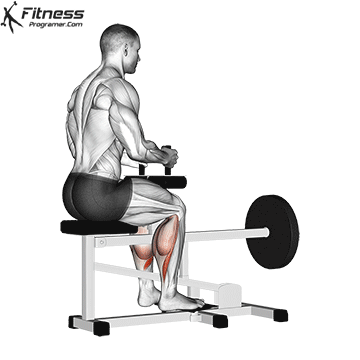
- Sit on a calf raise machine or a sturdy chair with your feet flat on the floor and your knees at a 90-degree angle.
- Place a weight plate or dumbbells on your thighs for resistance.
- Push up onto the balls of your feet, lifting your heels off the ground.
- Hold the contraction at the top for a moment, then lower your heels back down.
- Repeat for the desired number of repetitions.
Donkey Calf Raises
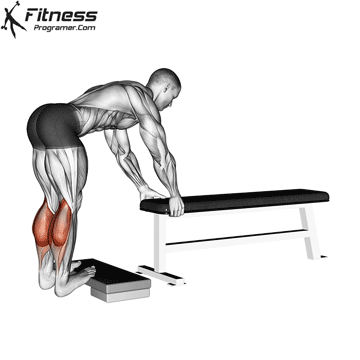
- Position yourself on a calf raise block or a stable elevated surface with your hands resting on a wall or a bench for support.
- Bend at the waist, keeping your back straight and your knees slightly bent.
- Push up onto the balls of your feet, lifting your heels as high as possible.
- Hold the contraction at the top, then lower your heels back down slowly.
- Repeat for the desired number of repetitions.
- This exercise places a more intense load on the calf muscles due to the increased leverage.
Standing Single Calf Raise
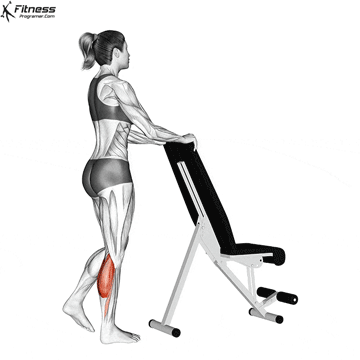
- Stand upright with your feet shoulder-width apart, near a bench or sturdy object for support.
- Lift one foot off the ground, keeping your body weight on the other foot.
- Balance on the standing foot and maintain a stable posture throughout the exercise.
- Slowly raise your heel as high as possible by contracting your calf muscles.
- Hold the peak contraction for a moment, feeling the tension in your calf.
- Lower your heel back down to the starting position in a controlled manner.
- Repeat for the desired number of repetitions on one leg before switching to the other leg.
Seated Calf Press on Leg Press Machine

- Sit on a leg press machine and position your feet on the footplate with the balls of your feet resting on the lower edge, allowing your heels to hang off the edge.
- Release the safety latch and lower the weight by bending your ankles to achieve a deep stretch in your calves.
- Press the weight up by extending your ankles and raising your heels as high as possible.
- Pause for a moment at the top, feeling the peak contraction in your calf muscles.
- Slowly lower the weight back down, feeling a stretch in your calves at the bottom position.
- Repeat for the desired number of repetitions.
Foam Rolling for Myofascial Release:
Incorporate stretching exercises for the calf muscles to improve flexibility and aid in recovery. Additionally, using a foam roller for self-myofascial release can relieve muscle tension and enhance blood flow to the calves.

Foam Rolling for the Calves:
- Sit on the floor with your legs extended, and place a foam roller under your calves.
- Use your hands to lift your hips slightly off the floor, supporting your weight with your arms.
- Slowly roll the foam roller from the back of your knees to just above your ankles, focusing on any tight or tender areas.
- When you find a tender spot, hold the pressure for a few seconds to release tension.
- Perform the foam rolling exercise for 1-2 minutes on each calf.
Foam rolling can help reduce muscle knots, increase blood flow, and promote muscle recovery after intense calf workouts. Consider incorporating foam rolling into your warm-up routine or as part of your post-workout cooldown.
Stretching for Flexibility:
Regular stretching exercises for the calf muscles can improve flexibility and range of motion.
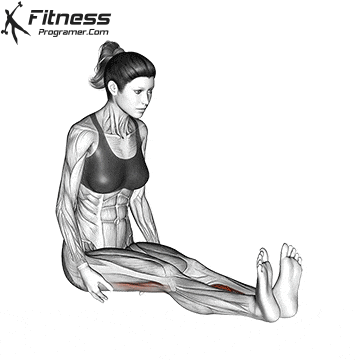
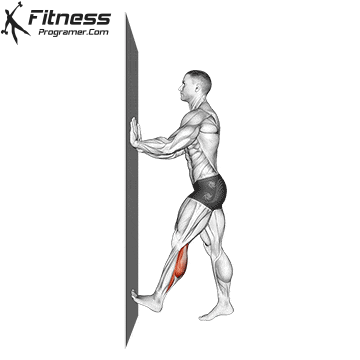
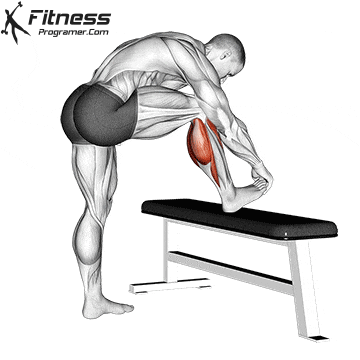
By integrating stretching exercises and foam rolling into your calf training routine, you can enhance your calf muscle flexibility, reduce the risk of injuries, and optimize overall calf development.
Combining Calf Training with Leg Day Workouts:
Integrating calf exercises into your leg day routine can enhance overall leg development. Below is an example leg workout that prioritizes calf development while targeting other leg muscles:
Leg Workout for Beginners
- Warm-up:
- 5-10 minutes of light cardio (e.g., stationary cycling or brisk walking)
- Dynamic leg stretches (e.g., leg swings, walking lunges)

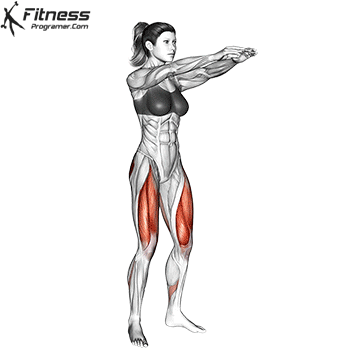
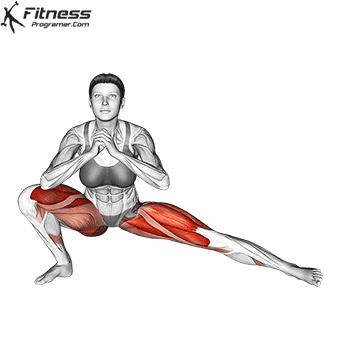
Hack Squat | 3x 8-10 | 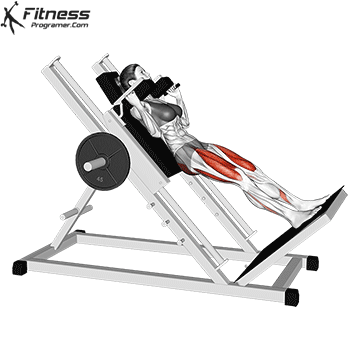 |
Leg Press | 3x 8-10 | 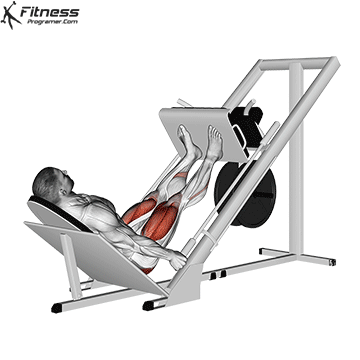 |
Leg Curl | 3x 10-12 | 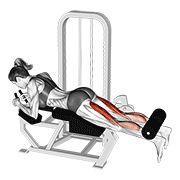 |
Seated Calf Raise | 4x 10-12 |  |
| Cooldown | 5 min |
Intermediate Leg Workout: Calf Focused
- Squats (Compound Exercise):
- 3 sets x 8-10 reps
- Focus on proper squat form, keeping your back straight and knees in line with your toes.
- Side Lunges (Compound Exercise):
- 3 sets x 10-12 steps per leg
- Use dumbbells for added resistance and maintain a controlled pace.
- Leg Curls (Isolation Exercise):
- 3 sets x 10-12 reps
- Focus on squeezing the hamstrings during the contraction phase.
- Seated Calf Raises (Isolation Exercise):
- 3 sets x 12-15 reps
- Perform seated calf raises on a calf raise machine or with dumbbells on your thighs.
- Single-Leg Calf Raises (Isolation Exercise):
- 2 sets x 12-15 reps
- Perform calf raises on one leg at a time, using bodyweight or dumbbells for resistance.
- Cool-down:
- 5-10 minutes of steady-state cardio or static stretches for the legs.
Final Thoughts: You Can Build Bigger Calves
If you’ve struggled with calf development, don’t give up. The key is consistency, strategic progression, and smart training methods tailored to the calves’ unique structure and function.
By combining high-frequency, full-ROM training with progressive overload, proper nutrition, and varied stimulus, you can finally make gains in one of the most stubborn muscle groups.

